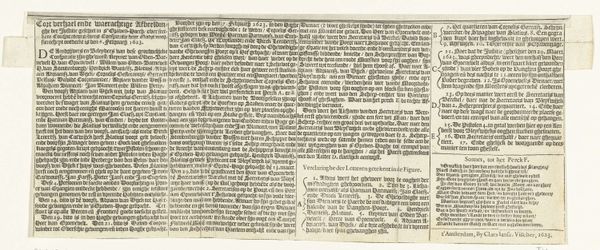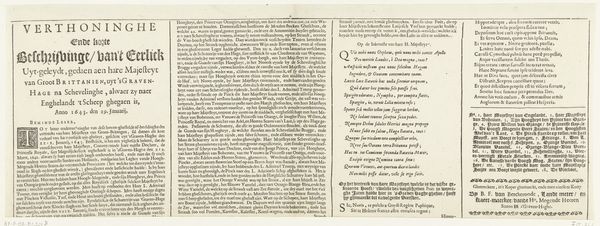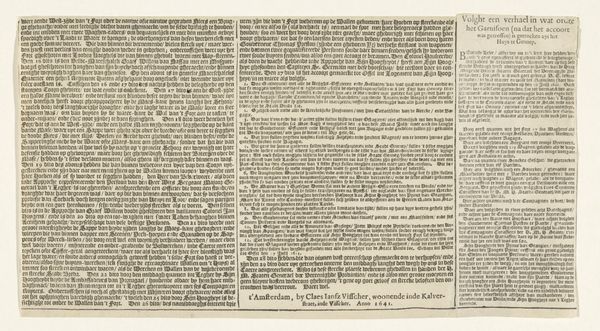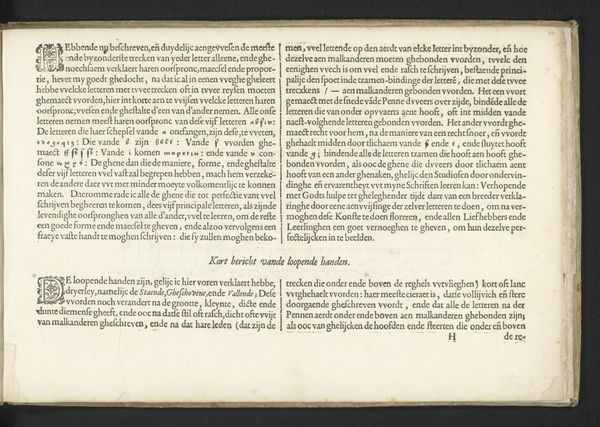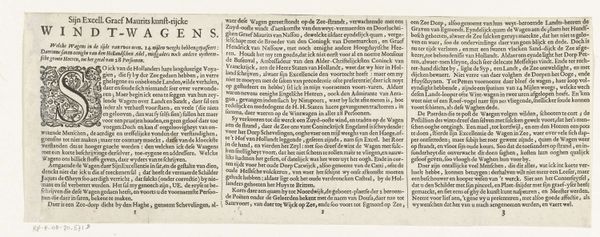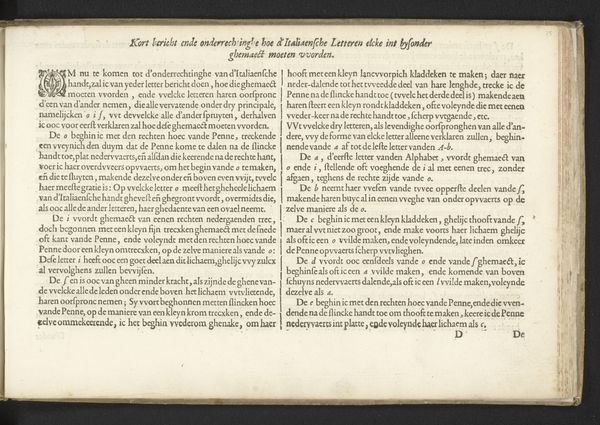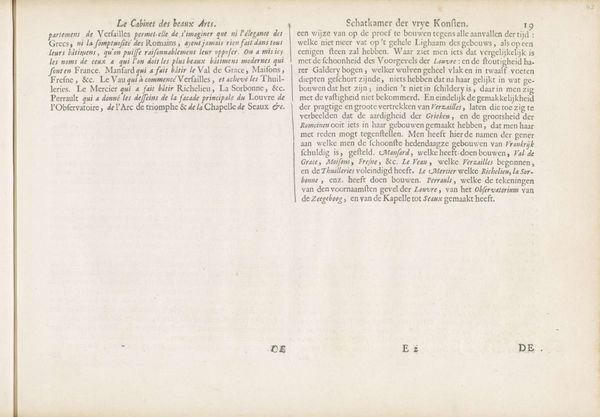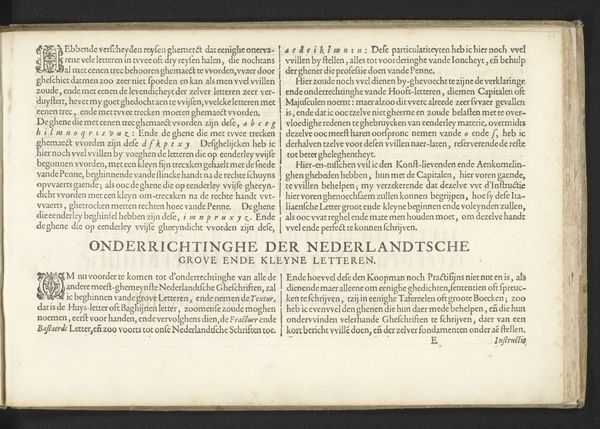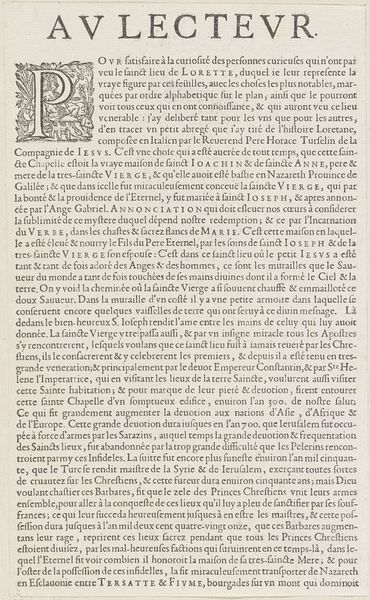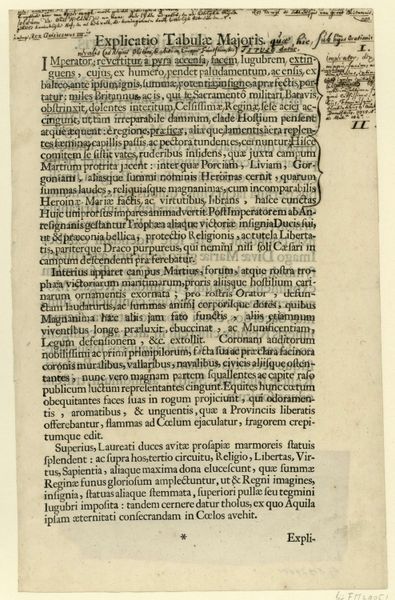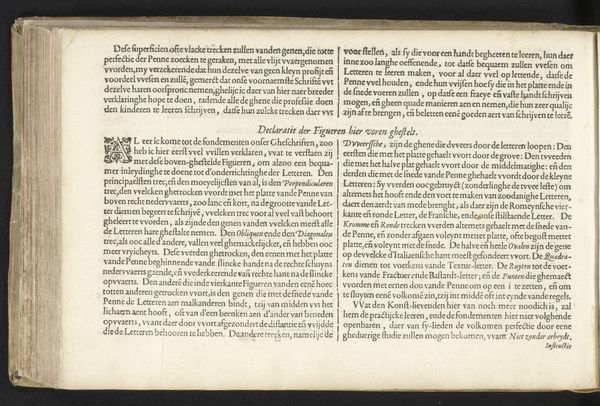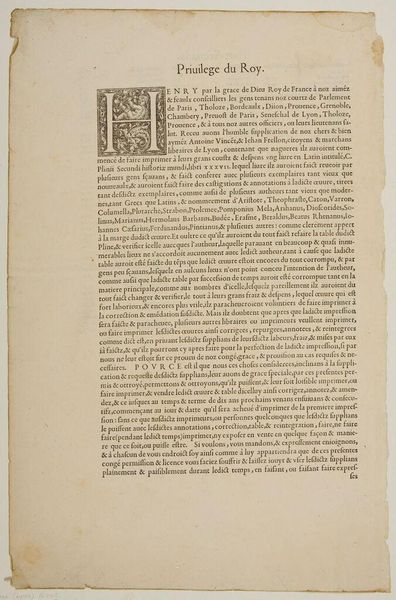
Toelichting van de werking van de zeilwagen van Simon Stevin, 1602 1603 - 1652
0:00
0:00
print, typography, engraving
# print
#
text
#
11_renaissance
#
typography
#
history-painting
#
engraving
Dimensions: height 131 mm, width 358 mm
Copyright: Rijks Museum: Open Domain
Editor: This is "Toelichting van de werking van de zeilwagen van Simon Stevin, 1602," made sometime between 1603 and 1652, by Christoffel van Sichem I. It's an engraving with typography, housed in the Rijksmuseum. Looking at it, the text is overwhelming; it's hard to get a sense of the image itself, as though the written account overshadows the visual depiction of this wind-powered carriage. How do you interpret this work? Curator: It is intriguing how this engraving blends scientific illustration with broader cultural narratives of progress and power, especially concerning Dutch identity. The text, as you noted, dominates the image, suggesting the importance of disseminating knowledge and celebrating technological innovation. Editor: So, the emphasis on text highlights a specific intent? Curator: Yes, precisely. This wasn’t simply about documenting an invention; it was about projecting Dutch ingenuity and commercial prowess. Consider how the text details the social impact, mentioning prominent figures who witnessed or utilized the carriage. It situates the invention within a network of elites and international relations. How does this social framing influence our reading of the visual representation of the carriage itself? Editor: It almost feels like a publicity stunt, then. It makes you wonder about whose perspectives are centered in the narrative. Was this technology truly revolutionary, or was it more about reinforcing existing power structures? Curator: Exactly. This work serves as a reminder that art and technology are always embedded within social, political, and economic contexts. Even an ostensibly "objective" illustration can be a tool for shaping collective memory and national pride. It certainly prompts reflection on how we celebrate innovation and progress today and the stories we choose to tell. Editor: I didn't realize it had so much to say! I see that understanding historical context changes my first impression, because what seems like pure technical exposition has a deeper agenda, reflecting and reinforcing specific values and narratives.
Comments
No comments
Be the first to comment and join the conversation on the ultimate creative platform.
